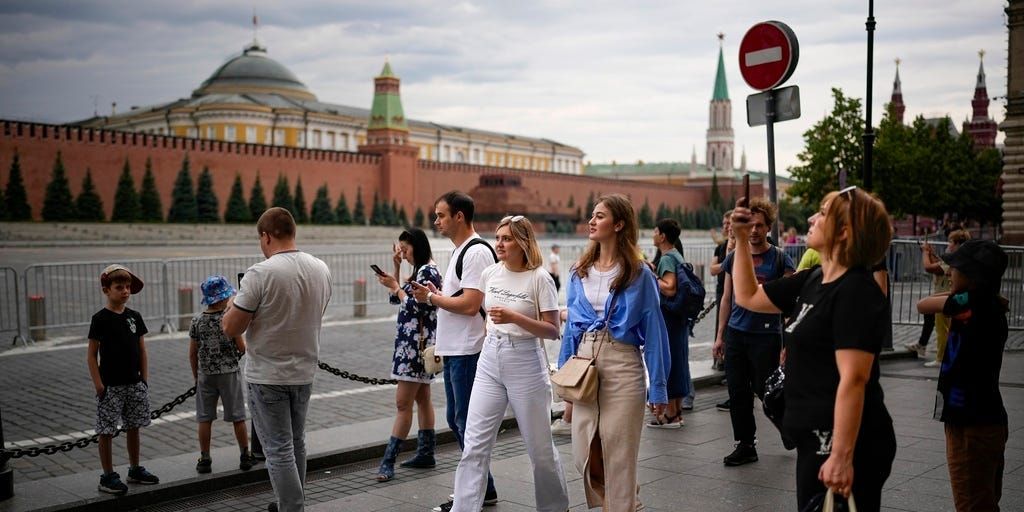Russia's Economy Is Booming, but This Could All Come Crashing Soon
Russia's wartime economy is thriving, the New York Times reported Monday.
The Kremlin implemented measures to boost military equipment output, benefits, and mortgage subsidies.
These measures have boosted the demand — and prices — for a range of goods and services in Russia.
Get the inside scoop on today’s biggest stories in business, from Wall Street to Silicon Valley — delivered daily. Loading Something is loading. Thanks for signing up! Access your favorite topics in a personalized feed while you're on the go. download the app Email address By clicking ‘Sign up’, you agree to receive marketing emails from Insider as well as other partner offers and accept our Terms of Service and Privacy Policy
Nearly 18 months after the Ukraine war started, Russia's economy appears to be humming along — baffling economists who had predicted catastrophic outcomes following sweeping sanctions against Moscow's invasion of Ukraine.
While some economists have questioned the quality and veracity of Russian data releases, a New York Times report on Monday offered a nuanced picture of the country's wartime economy that's helping drum up popular support for Putin.
Russia's economic strength so far is due to the Kremlin's measures — such as boosting the production of military equipment and raising pensions, salaries, and other benefits for people who are not well-off, per The Times. The state is also subsidizing mortgages.
Soldiers fighting the war are also earning far higher salaries than in poorer regions of Russia, according to the Times. For instance, Russia was offering a minimum 160,000 rubles, or $1,740, in monthly wages for contract soldiers last September — three times the national average, Reuters reported at the time.
Large payouts for those who died in the war — for example, a 5 million rubles payout for families of Wagner Group fighters who died in the war — are circulating in the economy.
These measures have boosted the demand — and prices — for a range of products and services in Russia, per The Times.
Corporate loans have increased 19% in the year to June as investments grew, according to The Times, citing Russian central bank's figures. Meanwhile, the value of mortgages taken out from Russia's top 20 banks surged 63% in the first half of the year from a year ago, The Times reported, citing state-run lender Dom.RF, and the real estate research firm Frank Media.
Russia's economy is running so hot that its central bank raised interest rates by one percentage point on July 21 — double the 0.5 percentage point analysts polled by Reuters had expected — to tame inflation that hit 3.25% in June from a year ago.
But the boom may not last.
The house of cards could soon crumble
"As an economist, I don't know how this bubble can be deflated," Alexandra Prokopenko, a researcher with the Carnegie Russia Eurasia Center and a former adviser at the Russian central bank, told The Times.
"One day it could all crash like a house of cards," he added.
Russia's central bank has also been candid about its gloomy assessments of the economy — which at times were at odds with more bullish statements from the Kremlin. But, the institution has come under pressure from Moscow to give a more "upbeat assessment" about the country's economy, Bloomberg reported in February.
However, experts are not optimistic about Russia's economic outlook even as they acknowledge the current robustness of its economy.
In April last year, Russian central bank governor Elvira Nabiullina warned the country's reserves won't last infinitely. In December, she also expressed concerns about inflation and the tight labor market due to Putin's military draft. She repeated her concerns about price rises and the labor shortage in her July rate hike announcement.
Ariel Chernyy, an economist at Italian bank UniCredit, forecasts Russia's GDP to grow by 1% this year — reversing a 2.1% contraction last year, according to a July 6 note seen by Insider.
Chernyy said the country's economic resilience is due to government spending and the implementation of import-substitution projects that are boosting the domestic industry.
But it "does not mean a higher GDP growth rate that can be sustained in the long term" due to a shrinking labor pool and other issues like inferior import substitutes, he added.
Source: Business Insider


